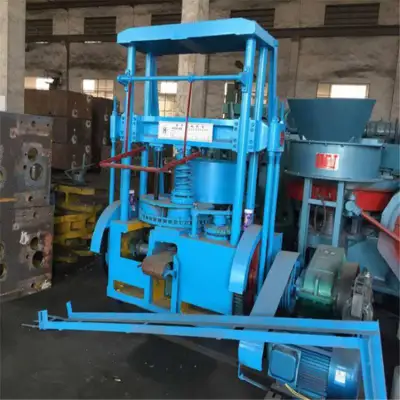The Manufacturing Process of Coal Briquettes: From Raw Material to Finished Product
The production of coal briquettes involves a series of mechanical and chemical processes that transform raw coal dust into a compact, easily handled, and efficient fuel source. This process is facilitated by specialized machinery designed to handle each step efficiently and effectively. Here, we will explore the machinery involved in coal briquette production and outline the key stages of the manufacturing process.
Machinery Used in Coal Briquette Production
Crushing Machine: This machine is responsible for breaking down large pieces of coal into smaller, more manageable sizes. The crushed coal ensures uniformity in the briquette formation process.
Mixing Machine: The crushed coal is then mixed with binders (such as clay, starch, or molasses) and other additives that enhance the briquettes' combustibility and stability. The mixing machine ensures a homogeneous mixture, which is crucial for consistent briquette quality.
Briquetting Machine: This is the core piece of equipment in the production line. The briquetting machine compresses the mixed coal into a solid form using high pressure. The machine comes in various types, including roller press, hydraulic press, and screw extruders, each suited for different production capacities and briquette shapes.
Drying Machine: After briquetting, the coal briquettes often contain some moisture that needs to be removed. The drying machine reduces the moisture content to an optimal level, ensuring the briquettes are durable and have a long shelf life.
Packaging Machine: Once dried, the briquettes are packaged for distribution. The packaging machine can automate the process, sealing the briquettes in bags or boxes, ready for transportation and sale.
The Coal Briquette Production Process
Raw Material Preparation: The first step involves sourcing the raw coal. This coal is typically mined and transported to the production facility where it undergoes initial crushing.
Crushing and Mixing: The raw coal is fed into the crushing machine, where it is ground into smaller particles. These particles are then transferred to the mixing machine, where binders and additives are thoroughly combined with the coal dust. The binders are essential as they help the coal particles stick together during the briquetting process.
Briquetting: The homogeneous mixture is fed into the briquetting machine. Under high pressure, the mixture is compacted into briquettes. The shape and size of the briquettes can vary depending on the machine and the intended use of the final product. Common shapes include oval, cylindrical, and pillow-shaped briquettes.
Drying: The freshly formed briquettes are relatively soft and may contain some residual moisture. They are passed through the drying machine, which uses heat and air circulation to reduce the moisture content. Proper drying is crucial as it affects the briquettes' strength and combustibility.
Cooling and Packaging: Once dried, the briquettes are allowed to cool. They are then packaged using the packaging machine, ensuring they are protected from environmental factors such as moisture and dust during storage and transportation.
Conclusion
The production of coal briquettes is a comprehensive process involving several key stages and specialized machinery. From the initial crushing of raw coal to the final packaging of the finished briquettes, each step is crucial in ensuring the production of high-quality, efficient, and environmentally friendly fuel. This process not only makes coal more manageable and transportable but also helps in utilizing coal dust, thereby reducing waste and contributing to energy sustainability.


